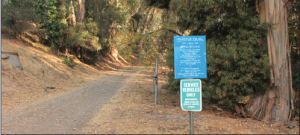
According to Phil the Groundhog, there are about five weeks left of winter to get through. For some, this will be easier than others, as Seasonal Affective Disorder (SAD) affects more than three million people in the United States per year. This is a mood disorder related to the changing seasons. People with SAD feel depressed during the fall and winter months. Even if you aren’t effected by the disorder, it is normal for shorter and darker days to have an impact on your mood and mental health. Here are a few tips to help manage the lower moods that might come with five more weeks of winter.
Try to get up earlier. Getting up earlier than you normally do will help you catch those extra hours of sunlight in the morning. It will also give you a little extra time to make yourself breakfast, which is said to be the most important meal of the day. A healthy breakfast will provide you with more energy to go about your day, in turn boosting your mood.
Spend as much time as possible outdoors. The more time you spend outdoors, the more sunlight you’ll take in, reducing the negative effects of the cold, dark season. Some outdoor activities to try include walking, running, hiking, biking or another outdoor sport. You could even try taking your homework outside for a change in scenery and still reap the benefits of soaking up the (small amount of) sunshine.
Try exercising more. While meditation is not for everyone, it can help to control stressful or anxious thoughts that lead to feelings of depression. Try sitting comfortably and focusing on your breathing to help temporarily clear your mind of negative thoughts.
Get a light therapy box. For those with SAD, exercise and meditation probably won’t cut it. Many people find that light boxes help alleviate their symptoms by exposing them to the light being missed during the short days. Find a box that is made specifically for Seasonal Affective Disorder. Try sitting in front of the box with your eyes open, and without looking directly at the light, for 20 to 30 minutes within the first hour of waking up.
Find a medication that works for you. If you struggle with SAD you might want to try using medication. While the other tips may help alleviate more minor symptoms, antidepressants might help treat the major ones. Talk to your doctor about what option is best for you.
Even if you don’t have SAD, these tips might relieve some mood changes brought on by the winter months. They are not meant to treat the disorder but rather offer some potential relief during the gloomier seasons.
